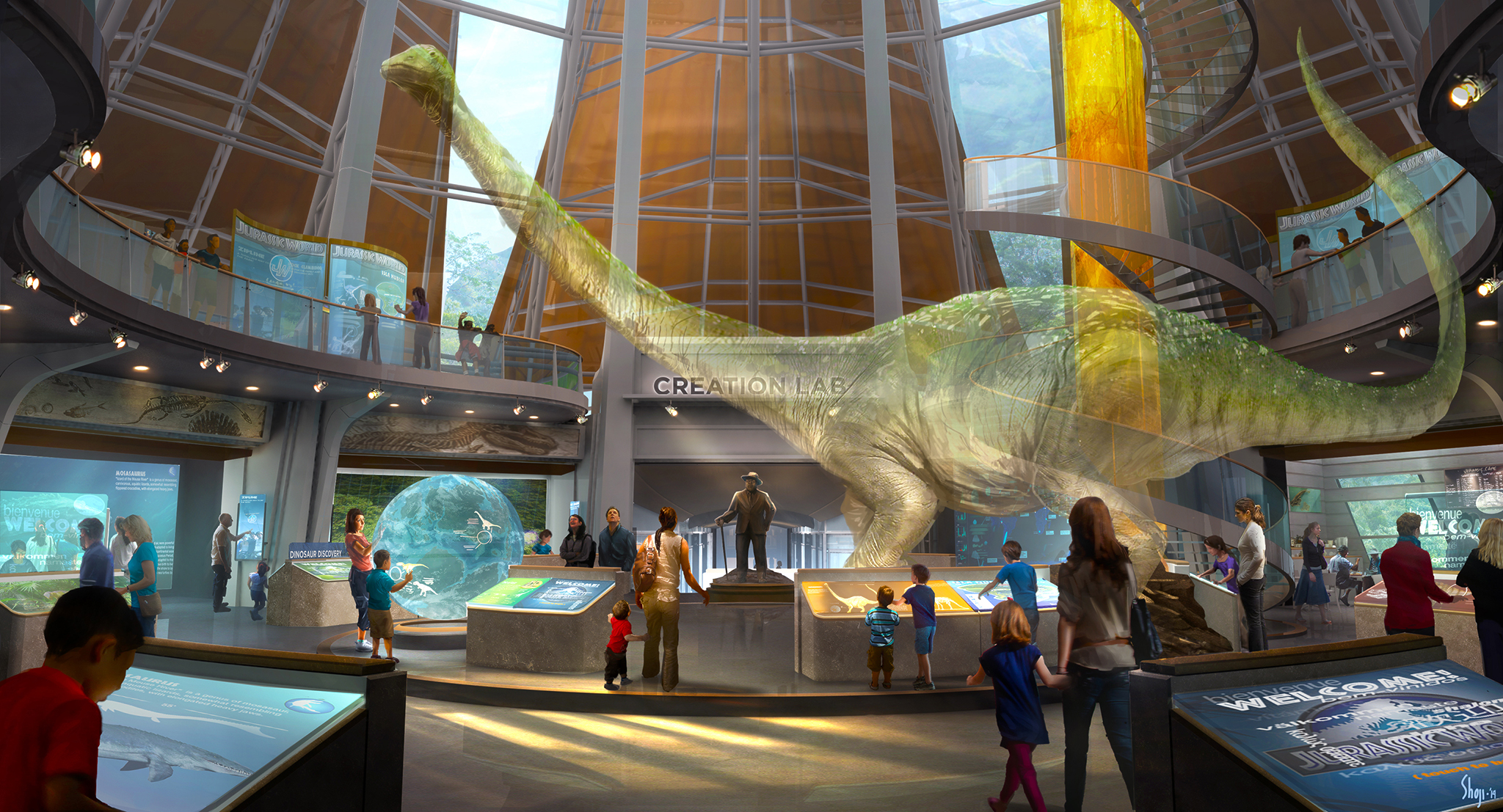The advent of cinematic technology has redefined the landscape of film viewing, forging new avenues for audience engagements and experiences. One contemporary subject that incites considerable debate among film enthusiasts is whether to purchase 2D or 3D tickets for a blockbuster production, such as “Jurassic World.” This discussion is particularly pertinent given the film’s striking visual effects and intricately engineered landscapes. The decision is not merely a matter of format preference but extends into a deeper realm of emotional and psychological investment in the film. This article elucidates the nuances of both viewing options and their implications on audience experience.
To comprehend the choice between two-dimensional and three-dimensional formats, one must first delineate the distinct functionalities of each medium. 2D films deliver a flat portrayal of the visual narrative, relying heavily on traditional cinematography and artistic direction to facilitate storytelling. In contrast, 3D films offer an immersive visual experience, utilizing stereoscopic projection to create an illusion of depth. This differentiation is paramount: while 2D can evoke emotional responses through character development and narrative structure, 3D amplifies these elements through enhanced visual immersion.
When contemplating the merits of 2D and 3D presentations, it is essential to acknowledge the profoundly tactile experience that 3D films provide. The spatial dynamism inherent in three-dimensional movies can induce a profound visceral reaction, wherein audiences feel almost coerced into the narrative. As dinosaurs roar and erupt onto the screen, the sensation transcends mere observation, ensnaring viewers within the story fabric itself. It is within this immersive spectacle that the allure of “Jurassic World” amplifies, appealing to the innate human desire for connection and wonderment.
However, this sensory euphoria must be balanced against practical considerations. The term ‘3D’ may evoke images of grandeur, yet the phenomena behind it can sometimes yield technical shortcomings, notably in terms of discomfort associated with extended viewing. Some viewers experience optical fatigue or headache, stemming from the prolonged strain on ocular muscles required to process depth cues. This phenomenon warrants careful consideration, particularly in the context of a feature-length film that may exceed two hours. If one is sensitive to such effects, the 2D offering becomes a more palatable alternative.
Moreover, the narrative lens through which one engages with “Jurassic World” may be influenced by the format selected. The 2D version affords audiences the opportunity to focus on subtleties of plot and character exposition. Subtleties that might otherwise be overshadowed by the spectacle of 3D grandeur can be fully appreciated in a more traditional viewing environment. This perspective invites viewers to engage actively, weaving their interpretations into the cinematic fabric without the distraction of immersive effects. The multilayered storytelling intrinsic to the film can resonate deeply, emphasizing the philosophical implications of human folly in the face of nature’s indomitable forces.
In a distinct vein, one must also consider the demographic dynamics that accompany each format. Family outings or group viewings often sway in favor of 3D spectacles, appealing to audiences with a collective interest in novel experiences. The allure of shared excitement cultivates a communal atmosphere, harnessing collective awe and engagement. Conversely, individuals seeking solitary reflection may find greater fulfillment in a 2D setting, where distractions are minimized, allowing for introspective engagement with the narrative.
Pricing constitutes another salient factor in the 2D versus 3D deliberation. Often, 3D tickets emerge as a premium offering, correlated with the perceived value of the immersive experience. While it is true that the advanced technology and expertise required to create 3D films command additional financial investment, one must weigh this against the tangible benefits derived from the viewing choice. Does the three-dimensional experience justify the financial expenditure? This query lies at the heart of the decision-making process.
Another consideration is the aesthetic design intrinsic to “Jurassic World.” The sprawling landscapes and meticulously constructed creature designs are marvels of modern filmmaking. The fine details, colors, and textures may be accentuated by the 3D format, yet the essence of artistry lies within visual storytelling, irrespective of dimensionality. How much does depth truly enhance the visual narrative? While the grandeur of 3D can accentuate specific moments, the artistry can equally stand robust on a 2D canvas. One must ask: is the experience of viewing a dinosaur leaping across the screen truly more exhilarating in three dimensions than the artful portrayal rendered in 2D?
Ultimately, the decision between 2D and 3D tickets for “Jurassic World” rests upon a confluence of individual predilections, physiological responses, and economic considerations. Each format offers its own merit, reflecting the multifaceted nature of film as an artistic medium. For those yearning for an immersive, visceral experience that transports them amidst the film’s Jurassic landscapes, the allure of 3D may be irresistible. Conversely, for those who prefer nuanced storytelling unencumbered by sensationalist distractions, the merits of 2D engagement warrant serious contemplation.
In conclusion, navigating this dichotomy requires introspection and self-awareness regarding one’s viewing preferences. Amidst the thrills of the cinematic journey, the choice between 2D and 3D offers not only an avenue for personal experience but also an opportunity to explore the varying facets of human engagement with art. Whether one emerges enthralled by the sweeping vistas in three dimensions or moved by the emotional depth conveyed within a more traditional frame, both experiences contribute richly to the overarching narrative that “Jurassic World” presents. Thus, it is incumbent upon each viewer to embark on this cinematic adventure with a discerning eye and an open heart.












